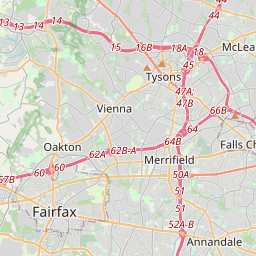Inscription
Hub, Home, Heart
— Greater H Street NE Heritage Trail —
The elegant Romanesque portion of the Senate Square condominium complex started life in 1874 as the Little Sisters of the Poor House for the Aged. St. Aloysius Church member Ellen Sherman, wife of Civil War General William Tecumseh Sherman, helped the Sisters secure congressional appropriations to build the facility. The Little Sisters begged for donations on DC streets to support their free care for the elderly, regardless of race or religion.In 1976 the city built the current overpass carrying H Street above Union Station's tracks. With a dangerous on-ramp just feet from their front door, the Sisters moved their home to the Catholic University neighborhood. In 1979 the Capital Children's Museum took over the old convent, moved the entrance to the rear, and inspired the "Hopscotch Bridge" mosaics on the overpass as designed by area artist Deirdre Saunder. The museum closed in 2004 for redevelopment as condominiums.
Dr. Thom Collins, born in 1905 and raised on the north side of the 300 block of H Street, was the son of a railroad engineer and descendant of Irish laborers recruited to rebuild Washington after the War of 1812. "Doc" Collins opened a medical practice in his home about 1935 and the 1940s charged seven dollars for house calls, recalled his son, broadcaster Pat Collins. He treated everyone, from residents of the Little Sisters' home and Gonzaga High School football players to members of Congress. Archbishop Patrick O'Boyle was a patient, as was a Union Terminal Market butcher who paid Collins in fresh meat. Although devoted to this community, Doc Collins moved away after the 1968 riots left much of it in ruins.
(Back):
Trains and streetcars created the Near Northeast neighborhood around H Street. The B&O Railroad's arrival in 1835 made this a center of energetic, working-class life. Workmen living north of the Capitol staffed the Government Printing Office, ran the trains, stocked the warehouses, and built Union Station. When a streetcar arrived linking H Street to downtown, new construction quickly followed.
H Street bustled with shops and offices run by Jewish, Italian, Lebanese, Greek, Irish, and African American families. During the segregation era, which lasted into the 1950s, African Americans came to H Street for its department stores and sit-down restaurants. Most businesses welcomed all customers.
Then came the civil disturbances in the wake of the Reverend Dr. Martin Luther King, Jr.'s assassination in 1968. Decades of commercial decline followed. Just off H Street, though, the strong residential community endured. The 2005 opening of the Atlas Performing Arts Center signaled a revival, building evocatively on H Street's past. Hub, Home, Heart is a bridge to carry you from that past to the present.
Hub, Home, Heart: Greater H Street NE Heritage Trail is an Official Washington, DC Walking Trail. The self-guided, 3.2-mile tour of 18 signs offers about two hours of gentle exercise. Free keepsake guidebooks in English or Spanish are available at businesses and institutions along the way. For more on DC neighborhoods, please visit www.CulturalTourismDC.org.
Details
| HM Number | HM1CYM |
|---|---|
| Marker Number | 5 |
| Year Placed | 2012 |
| Placed By | Cultural Tourism DC |
| Marker Condition | No reports yet |
| Date Added | Wednesday, October 22nd, 2014 at 11:37pm PDT -07:00 |
Pictures
Locationbig map






| UTM (WGS84 Datum) | 18S E 326400 N 4307578 |
|---|---|
| Decimal Degrees | 38.89995000, -77.00190000 |
| Degrees and Decimal Minutes | N 38° 53.997', W 77° 0.114' |
| Degrees, Minutes and Seconds | 38° 53' 59.82" N, 77° 0' 6.84" W |
| Driving Directions | Google Maps |
| Area Code(s) | 202 |
| Closest Postal Address | At or near 301 H St NE, Washington DC 20002, US |
| Alternative Maps | Google Maps, MapQuest, Bing Maps, Yahoo Maps, MSR Maps, OpenCycleMap, MyTopo Maps, OpenStreetMap |
Is this marker missing? Are the coordinates wrong? Do you have additional information that you would like to share with us? If so, check in.
Maintenance Issues
- Is this marker part of a series?
- This markers needs some tags to help categorize the marker
- What historical period does the marker represent?
- What historical place does the marker represent?
- What type of marker is it?
- What class is the marker?
- What style is the marker?
- This marker needs at least one picture.
- Can this marker be seen from the road?
- Is the marker in the median?

Comments 0 comments